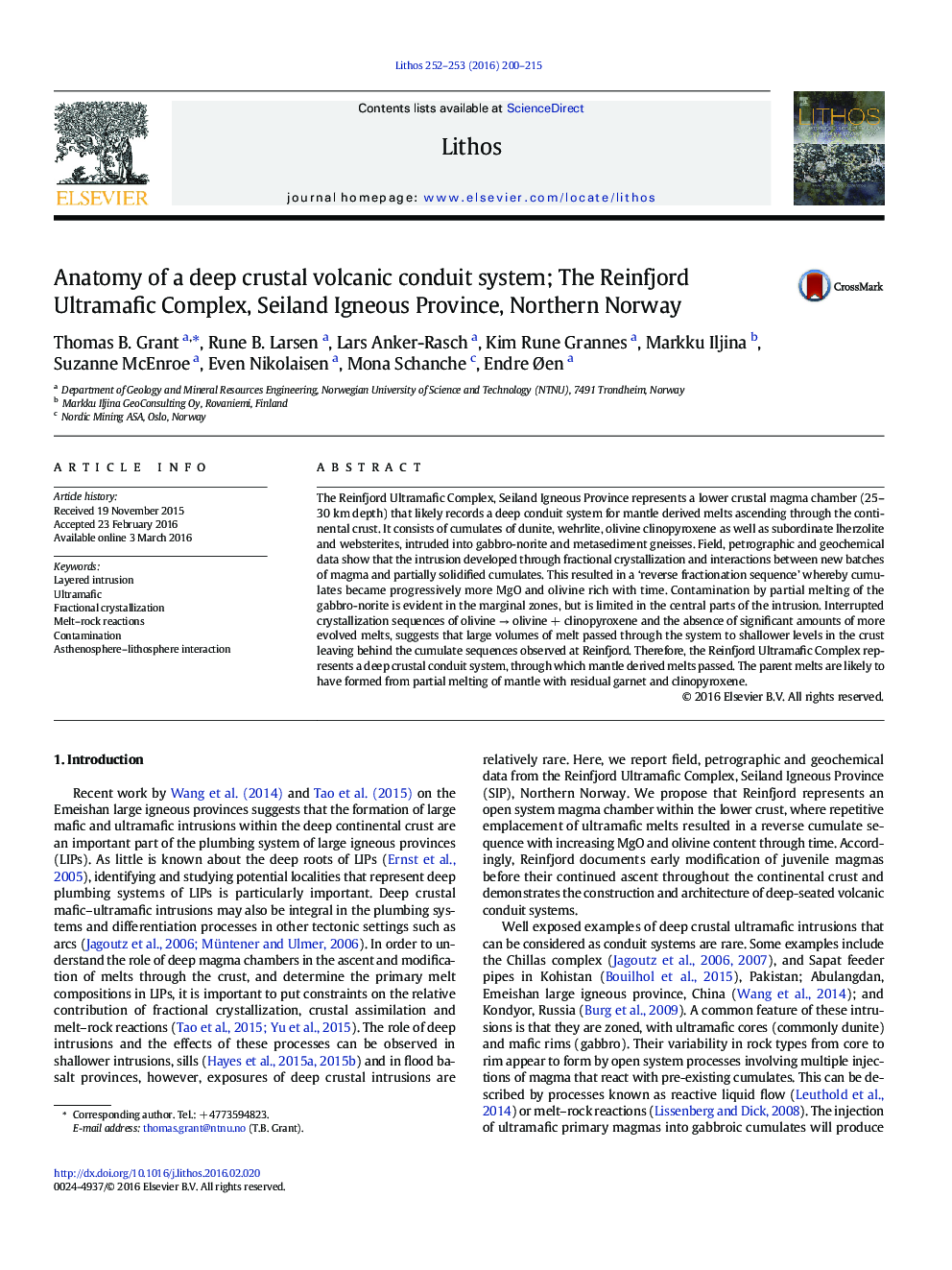| Article ID | Journal | Published Year | Pages | File Type |
|---|---|---|---|---|
| 4715585 | Lithos | 2016 | 16 Pages |
•The Reinfjord Ultramafic intrusion consists of cryptically and modally layered dunites, poikilitic wehrlites and olivine clinopyroxenites.•The cumulates primarily formed through fractional crystallization, magma recharge and melt–rock reactions.•Assimilation of wall rock gabbro and gneiss is only dominant in the marginal zones.•The intrusion represents the deep plumbing system of a large igneous province.
The Reinfjord Ultramafic Complex, Seiland Igneous Province represents a lower crustal magma chamber (25–30 km depth) that likely records a deep conduit system for mantle derived melts ascending through the continental crust. It consists of cumulates of dunite, wehrlite, olivine clinopyroxene as well as subordinate lherzolite and websterites, intruded into gabbro-norite and metasediment gneisses. Field, petrographic and geochemical data show that the intrusion developed through fractional crystallization and interactions between new batches of magma and partially solidified cumulates. This resulted in a ‘reverse fractionation sequence’ whereby cumulates became progressively more MgO and olivine rich with time. Contamination by partial melting of the gabbro-norite is evident in the marginal zones, but is limited in the central parts of the intrusion. Interrupted crystallization sequences of olivine → olivine + clinopyroxene and the absence of significant amounts of more evolved melts, suggests that large volumes of melt passed through the system to shallower levels in the crust leaving behind the cumulate sequences observed at Reinfjord. Therefore, the Reinfjord Ultramafic Complex represents a deep crustal conduit system, through which mantle derived melts passed. The parent melts are likely to have formed from partial melting of mantle with residual garnet and clinopyroxene.
